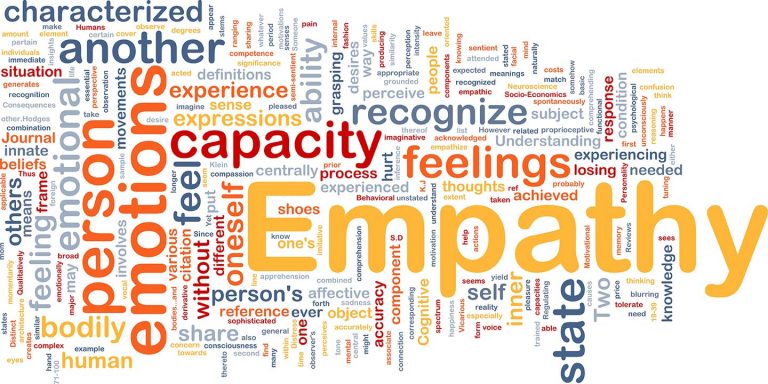Compassion is a topic that we don’t often see in leadership or organizational effectiveness. Companies are predominantly focused on strategy, operational efficiency, and most importantly, driving results and job performance. Individual contributors get rewarded for hitting their numbers. Leaders get rewarded for setting vision and strategy, and then getting people to deliver against performance expectations. Although this is the reality for many organizations, the best people managers know how to lead with compassion.
At Bandelli & Associates, we define compassion as the ability to have a positive impact on others through communication, relationship building, and demonstrating high emotional intelligence. Compassion is about learning peoples’ strengths and opportunities to help maximize their potential. Leaders that practice compassion build trust through open communication, showing empathy, and sharing information. They take time to build relationships and learn about the talent and capabilities of their people. They empathize with the experience of others, and look to be a source of support and guidance.
Leaders with high compassion tend to be the best mentors and coaches. Their personal investment in the growth and development of the people cultivates trust and loyalty. Their ability to connect with others leads to long-term and sustainable professional relationships.
In our executive coaching work with many of our clients, we have seen the benefits of compassionate leadership put into action. We have also seen the challenges and difficulties that occur when it is not practiced consistently. In two of our recent engagements, the stark contrasts impacted job performance, team effectiveness, and retention:
Case Example 1
Bob was a Director of Sales for a mid-size retail organization. He was known for leading with an iron fist and being a hard driver of results. His leadership style was more command and control than collaborative. When we began coaching Bob, he had a team that had problems working well together. His direct reports felt he was not providing the guidance and direction needed to inspire consistent performance.
We started the coaching engagement by conducting a 360-degree assessment. A select group of team members and peers provided us with a depth of insights into his leadership challenges. The three primary concerns were as follows: 1) Bob spent more time managing to the numbers than he did in supporting his people; 2) people feared him and were not willing to bring issues to his level given his aggressive and abrasive leadership style; and 3) he rarely took time to build relationships with his people. Everything was about hitting their monthly performance targets and there was no focus on motivating team members.
When we met with Bob to share the feedback, he was unwilling to admit his gaps and development opportunities. He felt that relationship building, focusing on open communication, and providing support to people was not relevant to his role as a leader. In his own words, “I have direct reports that should handle that soft stuff. I need to make sure we deliver our numbers. That’s what I am paid to do.” Over time, this mentality continued to cause friction and difficulties for his team.
Bob ended up losing several key people because of his inability to lead with compassion. His team’s performance numbers were good in the short-term, but the long-term impact of his leadership style prevented them from taking chances, pursuing opportunities, and ultimately creating an environment for success. After a series of people-related issues, Bob was removed from his role and placed in an individual contributor position.
Case Example 2
Chuck was a VP of Marketing for a large pharmaceutical company. He had a leadership style that was epitomized by collaboration and teamwork. As his sphere of influence grew over time, he made sure to keep lines of communication open with various stakeholders (e.g., direct reports, peers, and senior management). He used his emotional intelligence to establish rapport with others, understand people and their needs, and develop trust over time.
When we started working with Chuck our coaching efforts were to help support the growth and development of his team. He had several new hires added to the team, and wanted to make sure that they were successfully integrated into the mix. At the start of our engagement, he brought his people together to outline key objectives, and to solicit their input and feedback about the process.
Chuck made a concerted effort to keep people updated and aligned on the progress against key objectives of the engagement. He also made sure to meet with each of his direct reports on a regular basis so that he could continue to learn about their goals at an individual and team level. He took time to listen attentively and to anticipate potential issues that might surface.
By leading with compassion, Chuck was able to get the best out of his team. His people felt that their voices and input mattered, and that he took time to build relationships that would engender trust and loyalty. As our coaching engagement concluded, Chuck had a more focused and collaborative team. The new members were successfully integrated into the team, and they had a collective vision for the future. This enabled them to work together effectively and make the best use of their time and efforts as a team.
Leaders need to exercise compassion. They are role models for their people and for the broader organization. Direct reports look to them for guidance and support. When leaders practice compassion they can build stronger relationships, develop a deeper understanding of their people, and engender trust and loyalty.
For more information on leading with compassion, look for Dr. Bandelli’s book, What Every Leader Needs, available in bookstores, and on iBooks and Amazon this Fall 2016.
Contact Bandelli & Associates at abandelli@bandelliassociates.com to pre-order your very own copy today.
Leadership Matters. Without It, People Fail.


